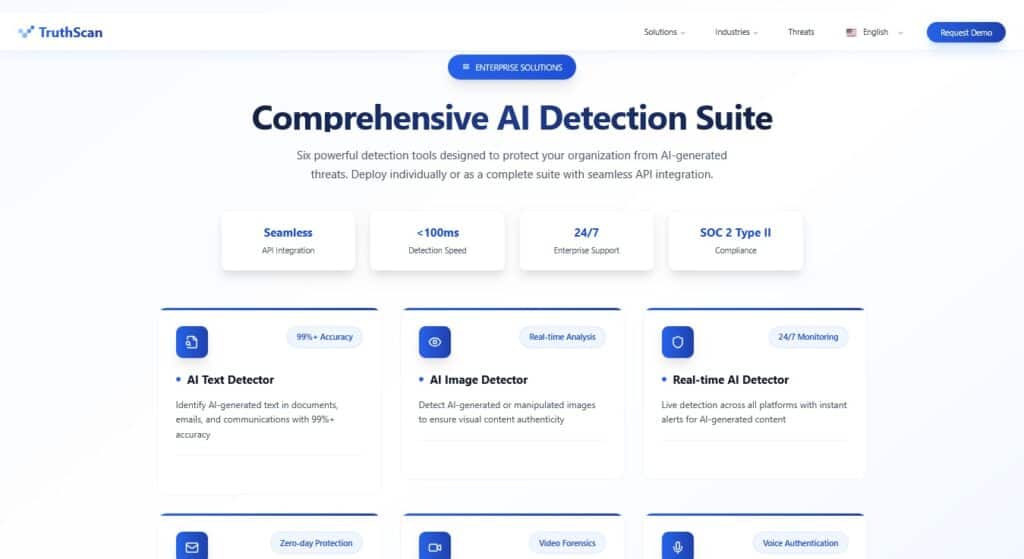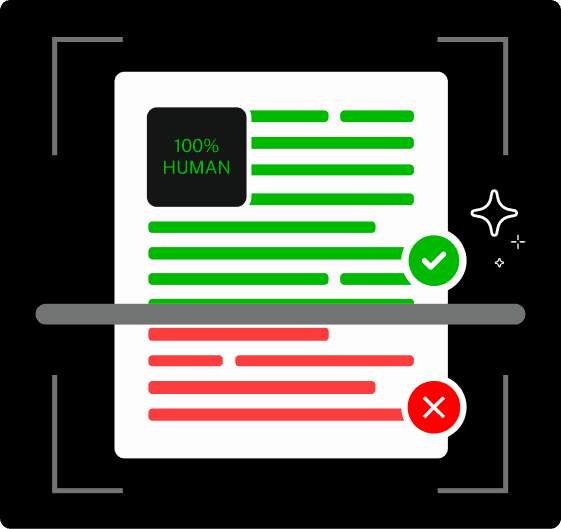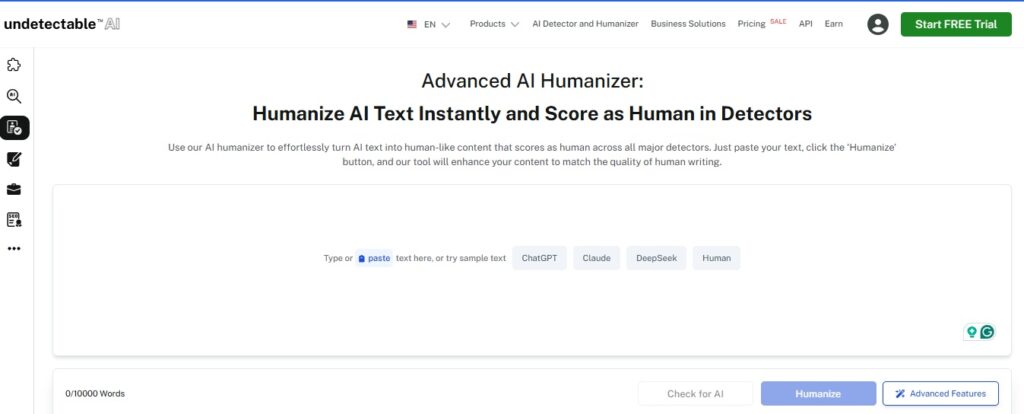Colleges are starting to get worried about the excessive use of artificial intelligence among students.
They have decided to find ways to figure out what is human-written and what is not. Hence, the use of AI checkers.
AI detection tools were developed to fight against the oversaturation of AI-generated content.
What started as a few experimental tools has now become a big deal. More colleges are starting to invest money in subscribing to AI detection systems.
So, as a student, it is alright if you are worried about your work being flagged as AI writing.
Key Takeaways:
- Colleges are now using some form of AI detection
- Most AI checkers give false positives and mark human writing as artificial intelligence
- Accuracy varies between different tools and some tools perform better than others
Why Colleges Are Turning to AI Checkers
Colleges did not just wake up one day and decide to start running AI checks.
Their decision to use AI checkers is because they have noticed a spike in artificial intelligence-generated reports and essays, and they want to maintain a good standard and ensure students are actually learning.
So, you cannot really blame them for using artificial intelligence checkers. The fight used to be against plagiarism; now it is against artificial intelligence.
Colleges had to find a way to adapt as soon as AI writing tools became a thing.
They had to find ways to fairly evaluate students who rely on artificial intelligence and those who do everything without AI.
They want to see your actual writing skills and not how well you can prompt ChatGPT.
Your professors want to know if you are actually learning the material or just copying and pasting from AI tools.
Using artificial intelligence checkers is not about being mean; it is more about maintaining the integrity of education.
Now, if you are looking for the best way to check your work before submitting, you should try out the Undetectable AI Checker.
Our tool can help you scan your text for AI and avoid potential penalties.
Here is how to use it:
- Go to Undetectable AI Checker
- Paste your text in the dialogue box
- Click on “Check for AI”
- Receive your results in seconds
- Look at the highlighted sections that might be flagged

Another good AI checker option is TruthScan. The tool ensures accuracy and reduces the likelihood of false positives
It can help you identify paraphrased, humanized, and modified AI content.

What AI Checkers Are Commonly Used by Colleges?
There are many AI checkers out there, but based on research, here are the ones commonly used by colleges:
Undetectable AI Detector
Undetectable AI Detector is one of the commonly used AI checkers that applies machine learning to check if a text was generated by artificial intelligence.
It scans your text and looks for indicators in the writing that don’t seem human.


Never Worry About AI Detecting Your Texts Again. Undetectable AI Can Help You:
- Make your AI assisted writing appear human-like.
- Bypass all major AI detection tools with just one click.
- Use AI safely and confidently in school and work.
You don’t have to go through a long process to use the tool; simply paste your content and receive your result in a matter of minutes.
According to research conducted by ZDNet, the tool is tested and trusted. After passing all five tests, Undetectable AI was given a 100% accuracy score.
Undetectable AI Detector comes highly recommended because it is more reliable, less stressful, and way better at not accusing you of cheating when you’re actually writing your own stuff.
What makes the Undetectable AI Detector stand out is its approach to detection. The tool combines multiple detection methods to give you an accurate assessment.
It can detect content from AI models such as ChatGPT, Gemini, Claude, and others.
Undetectable AI also offers more than just AI detection.
You can humanize Artificial Intelligence-generated text with our AI humanizer. Undetectable AI-humanized content can pass through AI detectors smoothly.
Turnitin
This tool is a well-known name in the academic sector. Turnitin has been used as a plagiarism detection tool for many years.
However, since artificial intelligence became popular, they have expanded to AI detection.
Turnitin works by dividing papers into sections and overlapping each section to see each sentence in context.
It then flags everything that mirrors AI writing, whether AI was used appropriately or not. Schools mostly rely on Turnitin because of plagiarism detection, so, naturally, they consider the tool for detection too.
The downside of this tool is that it cannot be used by individuals for free.
It is only available through paid institutional subscriptions, limiting access for individual users.
GPTZero
GPTZero is also common with educators, and it is quite ironic because the tool was developed by a Princeton undergraduate student, Edward Tian.
The tool accepts text, PDFs, and documents using a sentence-by-sentence classification model.
It provides users with a score of how confident it is that the text is artificial intelligence-generated. It also gives a percentage of how much it thinks an AI or a human wrote the text.
GPTzero claims to have a 90% accuracy rate.
Originality.AI
Originality.AI is also popular among colleges because it scans content to determine readability and percentages of:
- How likely is it that AI wrote a text
- How true a text is
- How likely is the text to be plagiarized
- Spelling and grammar correctness
Colleges like this tool because of the Chrome extension, which allows them to scan content quickly without having to copy or paste.
ZeroGPT
This tool allows you to upload more than one file at once. It gives you a percentage of how much AI is in the text.
It also highlights sentences written by AI. Colleges use ZeroGPT mostly because it supports all languages.
CopyLeaks
This tool is used by colleges to detect AI-generated text and source code. It also detects AI-generated text that has gone through a text spinner or has been manipulated to avoid detection.
How Do College AI Checkers Work?
College AI checkers do not require magic work.
Just like any Checker, it uses machine learning models that have been trained on datasets of both human-written and AI-generated content.
Here is how a college AI checker works:
Identifying Linguistic Patterns of AI Text
Artificial intelligence works with patterns. So, most AI checkers are trained to look out for patterns that you can also call ‘fingerprints’ of AI writing.
Here are the signs checkers look out for:
- Consistency in Sentence Structure: Checkers look for sentences that are evenly structured. This is because artificial intelligence writes in consistent patterns, while humans are more chaotic and varied.
- Flow and Transitions: AI text usually has unnaturally smooth transitions between ideas. You can even say the transitions are too perfect to be human-written.
- Tone: Artificial intelligence has a formal tone even when addressing casual topics.
- Vocabulary: Humans use simple everyday vocabulary. AI, on the other hand, uses complex vocabulary even when the context doesn’t require it.
- Repetition: AI repeats sentences and phrases, so if your text has similar sentences and phrases, it is likely to be flagged as AI.
In summary, if writing feels too robotic, the checker notices it. AI detectors use statistical analysis to measure how “AI-like” your text is, and if too many red flags pop up, you get flagged.
Limitations of Current Detection Methods
While Artificial intelligence gives great results, these tools are in no way perfect. This is mostly because they actually work by making guesses based on statistical patterns.
So it is easy for it to get things wrong. It has limitations, and they can sometimes flag your work for no valid reasons.
The limitations of current detection methods include:
- Language Variations: Non-native English speakers always have issues with AI detectors. This is because their style of writing and choice of words can look ‘unnatural’ to checkers
- Formal Writing Styles: Most times, academic or professional writing can lead to false positives because it has the same tone that AI uses. Formal vocabulary can come across as AI-generated.
- Inconsistencies: Artificial intelligence detection tools run on different LLMs, so it is possible to get different results for the same text
False Positives and Student Concerns
AI for students can be seen as both a friend and a foe.
Imagine spending time on a paper only for a random Detector to mark your hard work as AI-generated when it was actually human-written.
Many college students are getting really nervous about AI checkers because good human effort and AI writing are getting more similar as artificial intelligence improves.
Even if you follow the rules and diligently do your work, the system can work against you.
Most students have been victims of false positives and have had to spend time and effort to clear their names and defend themselves.
AI detectors are capable of misidentifying human writing and producing false positives.
So results should always be reviewed carefully. Now the issue is, how do you convince your professors that AI detectors can be wrong sometimes, so they should not rely on them?
Sadly, academic integrity is no longer limited to plagiarism; it now includes Artificial Intelligence-generated content.
What Do Top Colleges Say About AI Detectors?

The official stance from most top colleges is the same. Yes, they are using AI detectors, but not as the final word on whether something is AI-generated.
According to MIT, “AI detection software is far from foolproof—in fact, it has high error rates and can lead instructors to falsely accuse students of misconduct.
OpenAI, the company behind ChatGPT, even shut down its own AI detection software because of its poor accuracy.”
Carnegie Mellon University has also repeated the fact that AI detectors produce false results. “In addition to false positives and false negatives, detection tools may often produce inconclusive results.”
Stanford University has also spoken about the unreliability of AI detectors and how non-native English speakers are at a disadvantage.
“The detectors are not particularly reliable. Worse yet, they are especially unreliable when the real author (a human) is not a native English speaker.”
James Zou, a professor at Stanford, noted something about the detection process too.
“They typically score based on a metric known as ‘perplexity,’ which correlates with the sophistication of the writing — something in which non-native speakers are naturally going to trail their U.S.-born counterparts.”
Since most schools agree that AI detectors are not perfect, they have decided to do the following:
- Use AI detectors as a screening tool
- Have human reviewers look at flagged content
- Consider the context and the student’s previous work
- Look for other indicators like writing style consistency
So now, a detection tool can provide an estimate of how much of a text is AI-generated content, but the professor will need to use more than just that number to decide whether the student violated the academic integrity policy.
What Happens if You’re Caught Using AI in College?
What actually happens if you get caught using artificial intelligence? The answer to this question depends on your school’s policies and how serious the violation is.
Colleges are still trying to figure out where they draw the line. Some are more relaxed about AI assistance, while others ban it entirely.
For college admission essays, it could mean instant rejection. Most colleges take no changes when it comes to college essays.
They want to see your skill and experience, and AI doesn’t give them that.
For assignments and research papers, penalties can depend on how often you have been caught using AI. A first offender can be given a warning and a chance to redo the assignment.
However, for a chronic user, it could mean failing the course or worse, probation or even expulsion.
To be on the safe side, it is important that you always check your institution’s guidelines. You should also try to maintain academic integrity always.
How Students Can Avoid Issues With AI Checkers
It is better to be prepared to have your work passed through AI checkers, even if you did not use AI.
Here is how students can avoid issues with AI checkers:
- Use different sentence styles and structures
- Use a casual tone where necessary
- Try to ensure your writing reflects your actual knowledge level
- Read your work out loud to detect unnatural flow
- Always check your work for AI before submitting
You can also rely on other AI tools to avoid issues. In case you detect AI in your work, you can use the Undetectable AI Humanizer to make your text sound more natural and human-like.
This tool humanizes your text while maintaining your tone and style.

Another good AI tool is the Undetectable AI Essay Rewriter.
This tool is perfect for avoiding penalties for accidental plagiarism or AI detection in your essays. It ensures that your work is 100% original.

To also avoid detection issues, you can also use the Undetectable AI Paraphraser, especially if you don’t have a lot of sentences flagged.
With this paraphraser, you can rephrase AI sentences, vocabulary, and flow.

Explore our AI Detector and Humanizer effortlessly in the widget below!
Conclusion
It is clear that colleges are not backing down in the battle against AI use.
Since students have decided to use artificial intelligence, colleges have also chosen to use AI checkers.
One thing is clear: colleges are aware that these tools are not perfect, so they are mostly used as screening tools rather than as a final judgment.
As a student, the aim of using AI should not be to trick the system. You need to maintain honesty and integrity.
With tools like Undetectable AI’s AI Humanizer, AI Essay Rewriter, and AI Paraphraser, you can refine your work while keeping it natural and authentic.
When in doubt about AI use, ask your professors. And when you want your writing to stay sharp, polished, and undetectably human, trust Undetectable AI.
